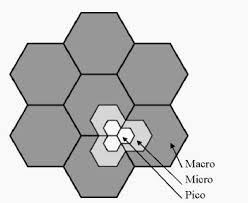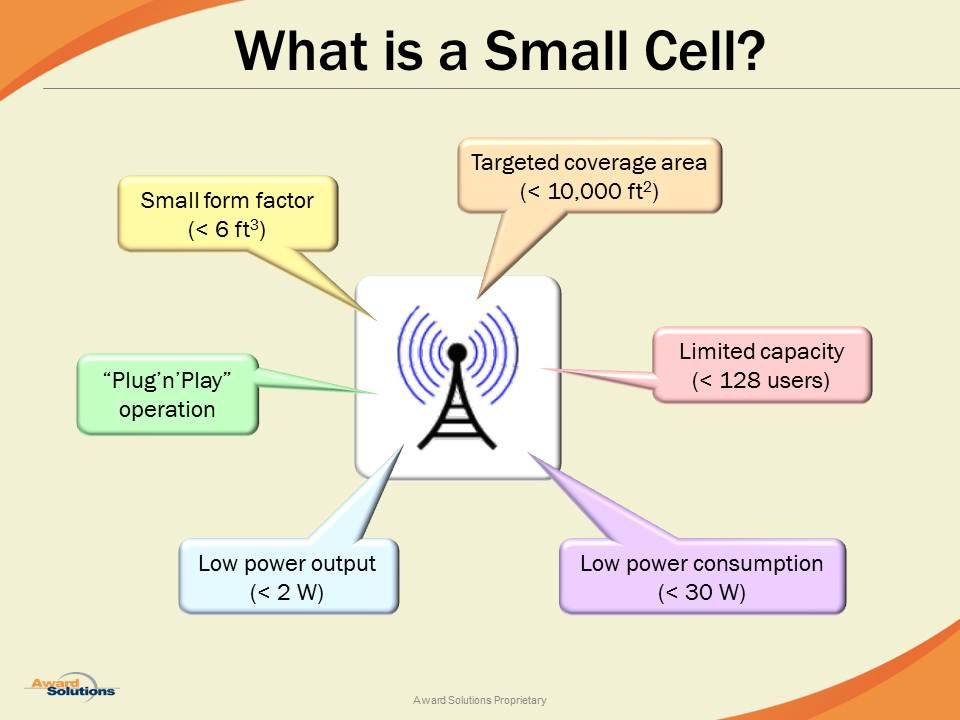

The basics of cell splitting is to reduce the strength of signal of an antenna, this reducing the area of coverage for the antenna. thus the capacity provided by an antenna over a large area is now concentrated in a small area. Obviously, if this were all that were done, then blank spots would be introduced and in order to remove these extra antennas need to be introduced into the network. this adds extra capacity to the whole cell. In some situations extra capacity is needed for parts of the cell and a second option is to introduce additional small cells on to of the original cell. This adds capacity but care is required regarding the interference between the two cells.
There are only 3 ways for a MNO to add capacity to a mobile network.
- Improve the spectral efficiency, using modulation techniques that maximize the number of bits sent per cycle. They can also employ multiplexing schemes so that there are no "gaps" in the channels when there is demand on other channels
- Add more spectrum. This can be by gaining more spectrum overall. Or using what they have in a better way. There is much re-factoring of 2G to 4G and soon removing 3G to free up this for 4G or 5G. However not all frequency is equal with lower frequencies more useful in rural areas, and higher frequencies provide capacity in urban areas
- More cells working a lower power can allow spectrum to be reused more times
Many diagrams of cell coverage show regular hexagonal coverage but in reality demand is not uniform within a cell. Masts that are directional, maybe along a road, can add capacity to the users of the road but add no extra capacity to the surrounding fields. Below are 4 cases of where extra capacity is required for a particular need and extra small cells are added to the network.
- As the user moves to the edge of a cell, at a maximum distance from all of the masts the mobile device can see. The signal to noise ration is at a maximum and so modulation must be slowed to make signals readable, to reduce the errors. The addition of a small cell at the worst point can add capacity to the network.
- For a building, in an urban environment, the damand within the buiding and it's environs may be a hot spot within the larger cell coverage area. A small cell targetted at providing mobile phone coverage for that buiding will server the users within the building and allow the users away from the building more network capacity.
- Similar to the above situation but with periodic demand. Events such as football matches where 50,000 supporters want to use their phone would hit the standard phone coverage cell. Extra small cell(s) add capacity for the duration of the event. Similarly for music festivals, which may be located in rural environments may not have suitable capacity for an influx of 20,000 people when the usual population is 200. Also the frequency used in a rural environment will typically be 800/900MHz so for the festival duration extra small cells using the 2.1/2.6GHz frequencies would add capacity for the event duration
- Very busy streets such as Oxford Street in London have a high demand, even given the overall high demand in the Central London area. To get capacity along Oxford Street, a number of small uni-directional cells can be installed using the higher frequencies. The shopper will have an increased number of handovers between these linear cells but as they will be travelling slowly (walking) it will not be an issue. For a fast car driver this would be more difficult to acheieve.
*u* ©mobilephonetechnology.co.uk all rights reserved 2017- 2026



